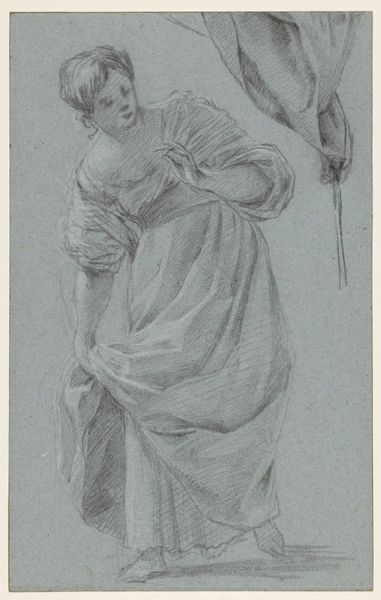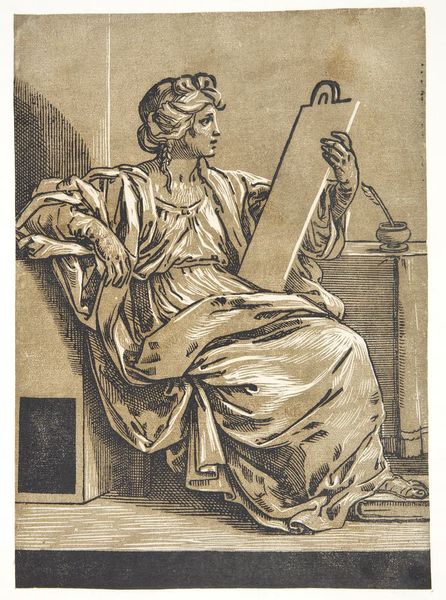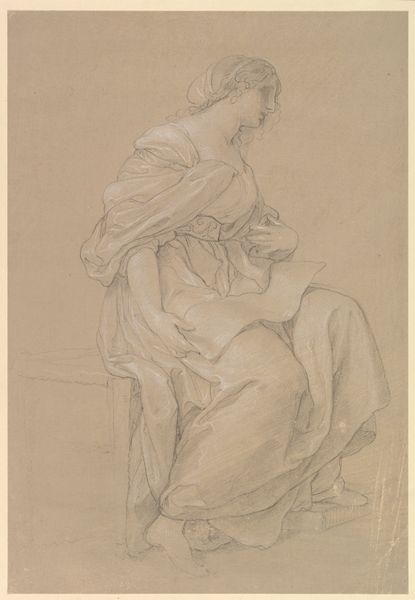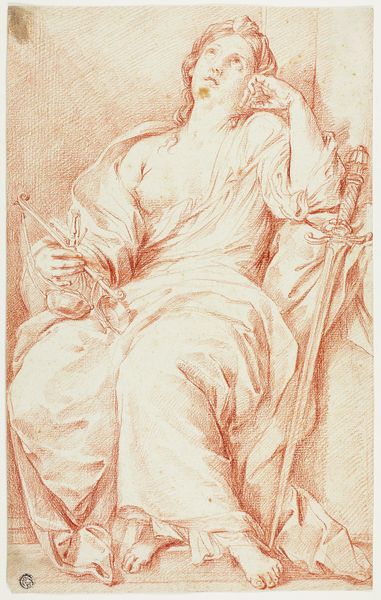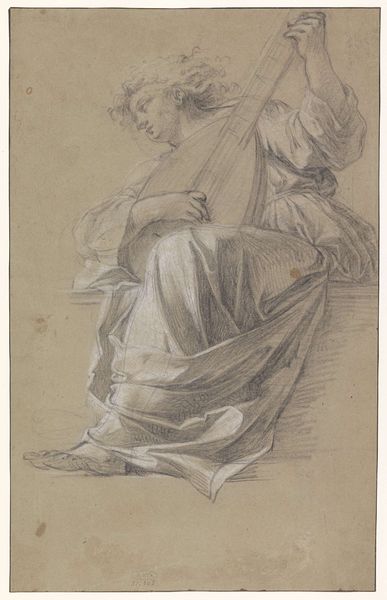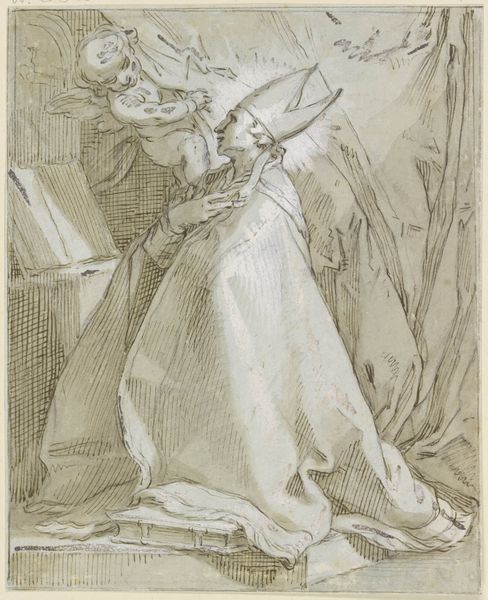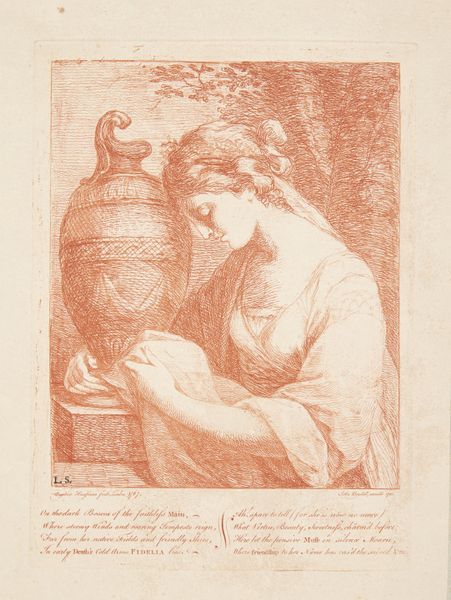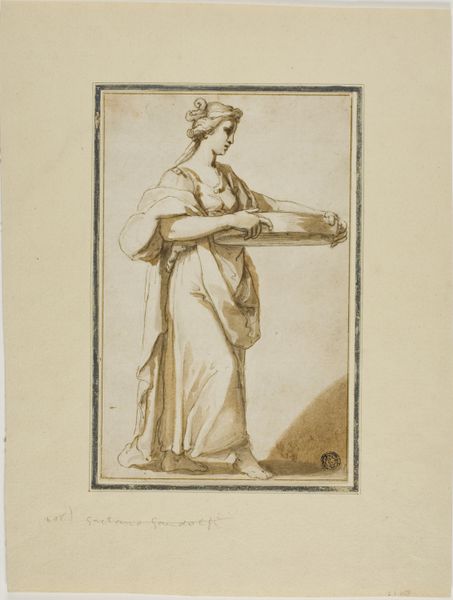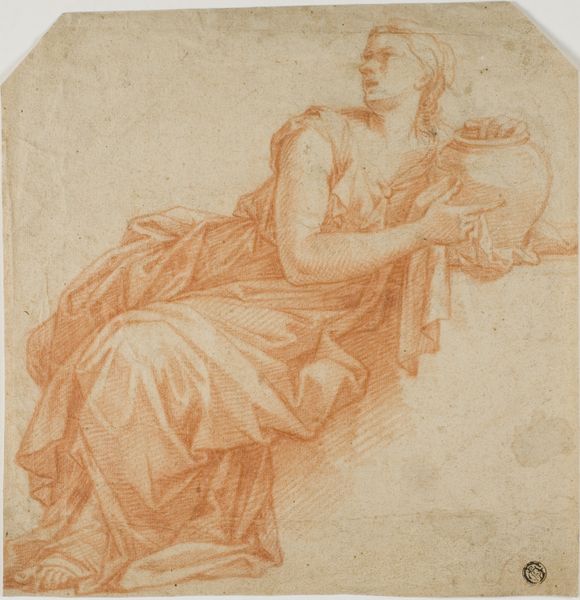
drawing, print, paper, chalk, charcoal
#
portrait
#
drawing
# print
#
charcoal drawing
#
paper
#
romanticism
#
chalk
#
water
#
portrait drawing
#
charcoal
#
history-painting
#
academic-art
Dimensions: 337 × 213 mm
Copyright: Public Domain
Editor: This is "Eulerpe or Clio," an undated drawing by Jean-Baptiste Greuze at the Art Institute of Chicago, rendered in chalk and charcoal on paper. It evokes a pensive mood with its monochromatic palette and classical figure absorbed in her studies. What are your insights on this artwork? Curator: What strikes me is how Greuze employs this figure, potentially a muse of history or epic poetry, to legitimize artistic endeavor. Notice the strategic inclusion of musical instruments and scrolls, signaling her intellectual and creative domains. It isn’t simply about portraying beauty; it’s about associating art with knowledge and prestige, aligning it with established academic pursuits in a period of significant social and political upheaval. How might its placement in a public museum today reinforce or challenge those initial associations? Editor: I guess displaying it in a museum bestows a sort of authority to Greuze's vision. By placing it within the context of art history, doesn't the museum sort of solidify his claim about art’s significance? Curator: Precisely. Museums are not neutral spaces; they actively shape our understanding of art’s value and its place in the broader cultural landscape. Think about how exhibiting this drawing alongside other works of the Romantic or Academic styles creates dialogues and hierarchies within the collection, further defining the narrative the museum is crafting. Does the drawing speak to contemporary audiences in the same way, or have its meanings shifted? Editor: That’s something to think about! It’s easy to view it through a contemporary lens and forget about the context it was initially made in. Thanks for giving me a different perspective. Curator: Indeed. Considering the socio-political environment is critical. It transforms our appreciation of not just the art, but the institution preserving and interpreting it.
Comments
No comments
Be the first to comment and join the conversation on the ultimate creative platform.
